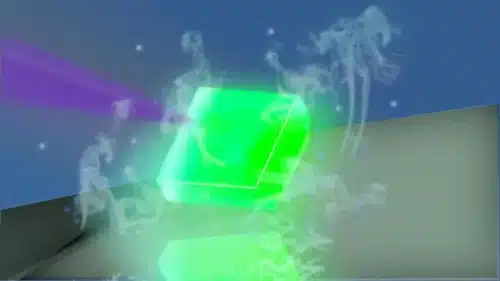Chiba University researchers introduce an optical cooling technique using quantum dots, offering energy-efficient solutions while addressing critical challenges.

A research team at Chiba University, Japan have developed an optical cooling method using perovskite quantum dots embedded in a crystal lattice, potentially improving cooling technologies. This method, based on anti-Stokes photoluminescence, allows materials to cool by emitting photons with more energy than they absorb, creating an energy-efficient alternative to traditional cooling systems.
Optical cooling is a highly sought-after technology due to its potential to reduce energy consumption and enhance the longevity of devices. Unlike conventional cooling systems that rely on mechanical components, this technique uses light to remove heat. The phenomenon at the heart of this research is anti-Stokes emission which involves electrons in a material interacting with lattice vibrations, or phonons, and emitting higher-energy photons. This process could theoretically allow materials to cool under light exposure if emission efficiency nears 100%. Such advancements could greatly benefit industries relying on heat-sensitive components, like semiconductor manufacturing, optoelectronics, and medical devices, which demand precise thermal management for optimal performance and durability.
The research team led by Yasuhiro Yamada, professor, Chiba University focused on a “dots-in-crystal” structure comprising CsPbBr3 quantum dots within a Cs4PbBr6 host crystal. “Quantum dots are promising for their high emission efficiency but are prone to degradation,” explains Yamada. The team’s approach stabilised these dots, improving their performance.
However, challenges remain. High exciton densities in quantum dots often lead to Auger recombination, releasing heat instead of light. The team used time-resolved spectroscopy to identify conditions under which this heating occurred and optimised low-intensity light experiments to demonstrate cooling. Despite these efforts, cooling effectiveness remained limited to a theoretical reduction of 10K from room temperature.
Importantly, the study addressed past issues in temperature measurement reliability, establishing a more accurate method to monitor cooling effects. “Our work sets a benchmark for future advancements in optical cooling,” Yamada notes.
This research not only underscores the promise of optical cooling but also highlights the hurdles that must be overcome. Future efforts to enhance emission efficiency and minimise heat generation could presage practical, energy-saving applications, fostering global sustainability initiatives.






